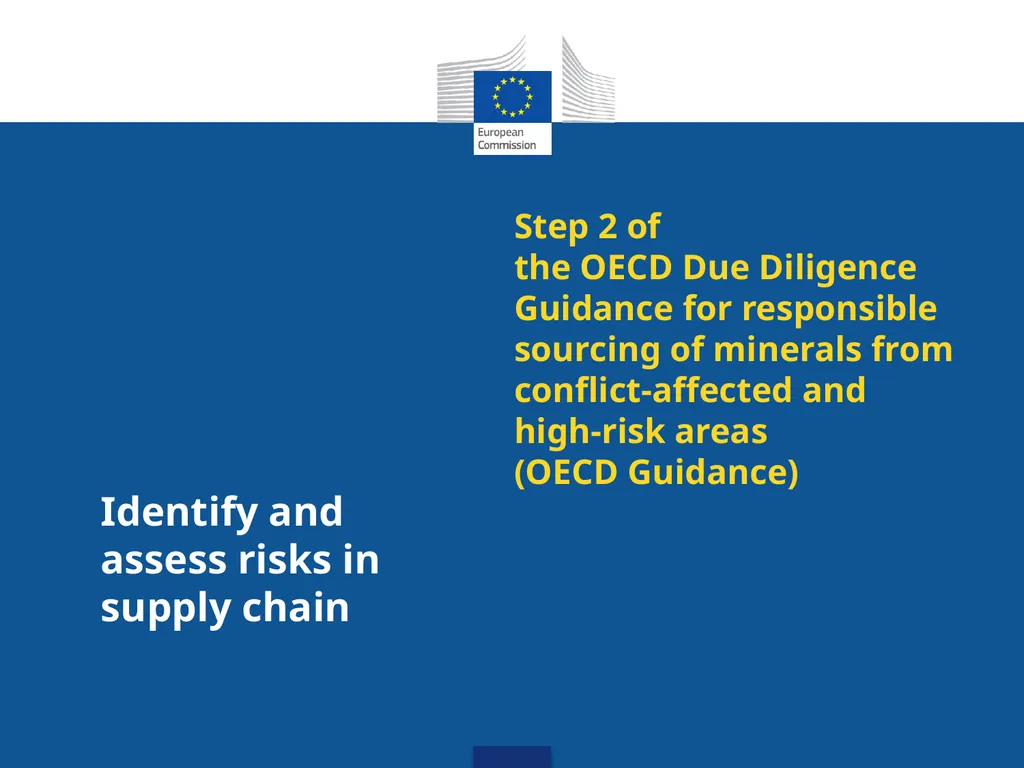
Step 2 of the OECD Due Diligence Guidance for
Author: trish-goza | Published: 2025-06-27
Description: Step 2 of the OECD Due Diligence Guidance for responsible sourcing of minerals from conflict-affected and high-risk areas (OECD Guidance) Identify and assess risks in supply chain Content Requirements Conflict affected and high-risk areas
Download Presentation
Download the PPT/PDF: Download
Transcript:
Loading transcript…